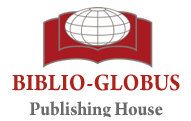Popov Andrey Vasilevich – (Vologda Research Center of the Russian Academy of Sciences )
The transformation of the world economic system and the transition of the most developed countries to the knowledge economy cause new requirements for the qualitative characteristics of workers. In particular, since the middle of the 20th century, the role of qualification and education in the production process as well as creative potential has increased markedly. These trends actualize the topic of studying the factors facilitating the development of workers’ creative abilities. At the current time, national science has a shortage of such research, which are mainly of a general theoretical nature. In this regard, the article focuses on the motivation for creative labor activity of Russian workers. The study is based on the monitoring data of the qualitative state of labor potential of the Vologda Oblast population for 2018. The results show the heterogeneity of the conditions to unleash workers’ creativity. This is due to the degree of involvement in the creative labor activity and the nature of employment. In conclusion, the author proposes the motivational-stimulating mechanism of creative labor activity.
Highlights:
1. … realization of the workers’ creative potential directly depends on their intrinsic motivation and working conditions.
2. The information received indicates the precedence of the external driving forces for creative labor activity over the internal.
3. On basis of conducted analysis it can be concluded that the conditions for using the workers’ creative potential are heterogeneous.
4. … an attitude to work as a self-significant value is essential for creative labor activity.
Tel : +7 495 649 6241
Fax : +7 800 3331538
E-mail : bgscience@idbg.ru
Address : RUSSIA, 101000, Moscow, Myasnitskaya st. 13-2
BIBLIO-GLOBUS Science - one of the leading science publishers in Russia.
Read More